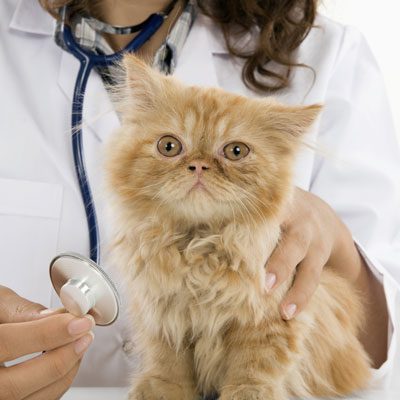As you may have noticed, cats are very, very good at getting comfortable. However, while Fluffy can certainly manage to sleep in some very awkward positions, she isn’t quite as good at cooling herself off. In fact, hot weather can be very dangerous to our feline buddies! Fluffy has a fur coat on, and really doesn’t have any effective ways to cool herself down if she overheats. Read on as a local vet lists some signs of heat exhaustion in cats.
Restlessness
One early sign of overheating in kitties is restlessness. If Fluffy is pacing, or keeps moving from spot to spot, she may be getting too hot.
Panting
Panting is definitely a sign that your furry pal is uncomfortably hot. Panting doesn’t cool cats off the way it does dogs, so kitties rarely pant unless they are overheating.
Sweaty Paws
Did you know that cats only sweat through their paw pads? If your kitty’s paws are sweaty, she may be dangerously hot.
Drooling
Drooling is another red flag to watch for. Most cats don’t drool much, if at all, unless they are too hot.
Excessive Grooming
Another thing Fluffy may do to try and cool herself off is groom herself excessively. If your furry buddy seems to be obsessively grooming herself on a hot day, she may be overheating.
Stumbling
Cats with heat exhaustion often lose their coordination. Fluffy may stumble or stagger as she walks.
Shallow Breathing
Shallow breathing is another red flag, and is definitely something to take very seriously.
Lethargy
We know, cats love doing as little as possible. However, if your feline pal seems lethargic, she may be sick from the heat.
Unusual Vocalizations
Cats are all unique, and some have some very unusual voices. What you want to watch for are vocalizations that are abnormal for your pet. If Fluffy is meowing more or less than usual, or if her voice sounds raspy or cracked, the heat may be too much for her.
If you see any of these symptoms in your kitty, take immediate steps to cool Fluffy off. You can give her some water, wrap her in a cool towel, or hold her in front of an open freezer. Call your vet for further instructions as you are doing this.
Please contact us, your pet hospital in Live Oak, FL, with any questions about cat care. We’re here to help!



